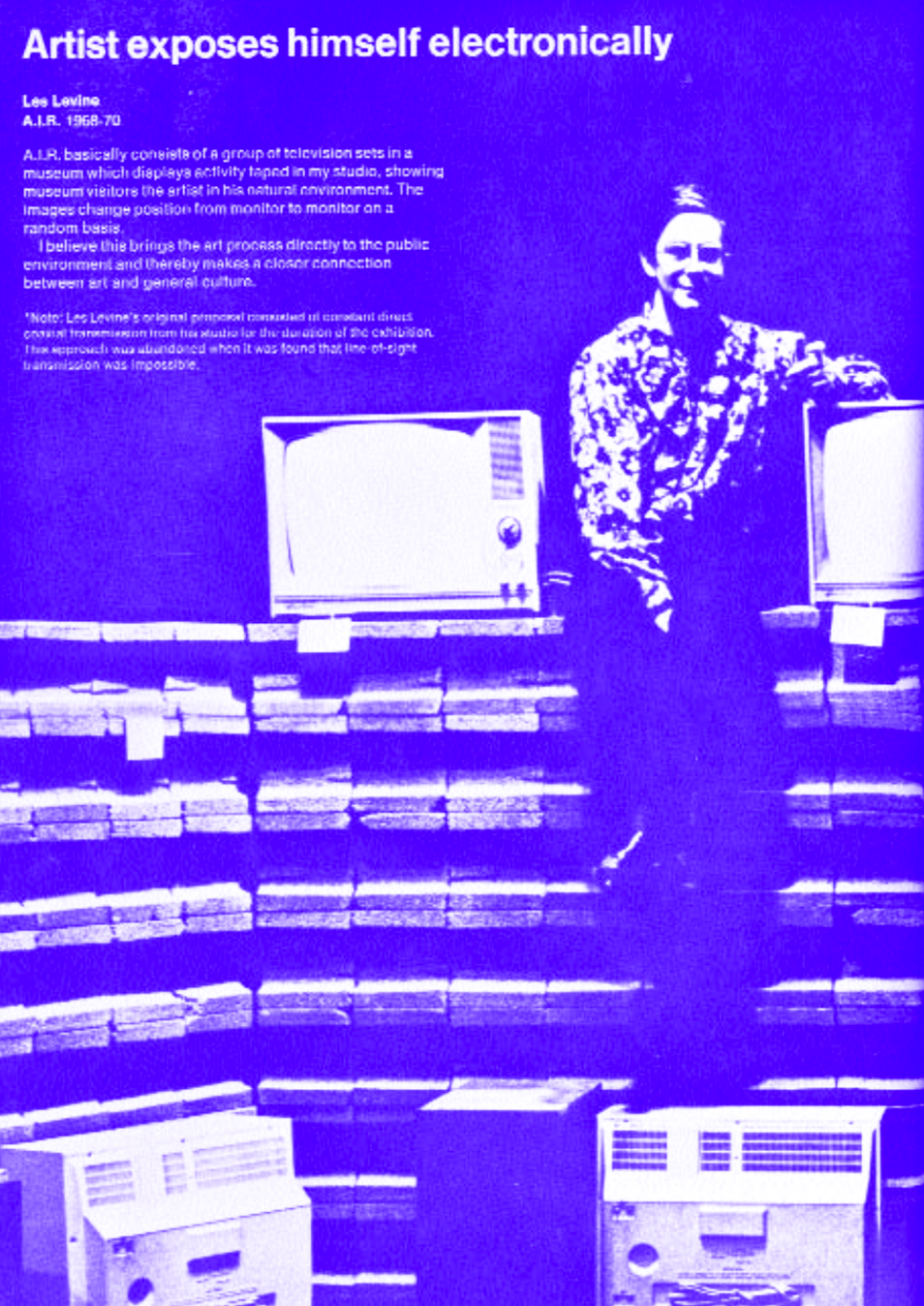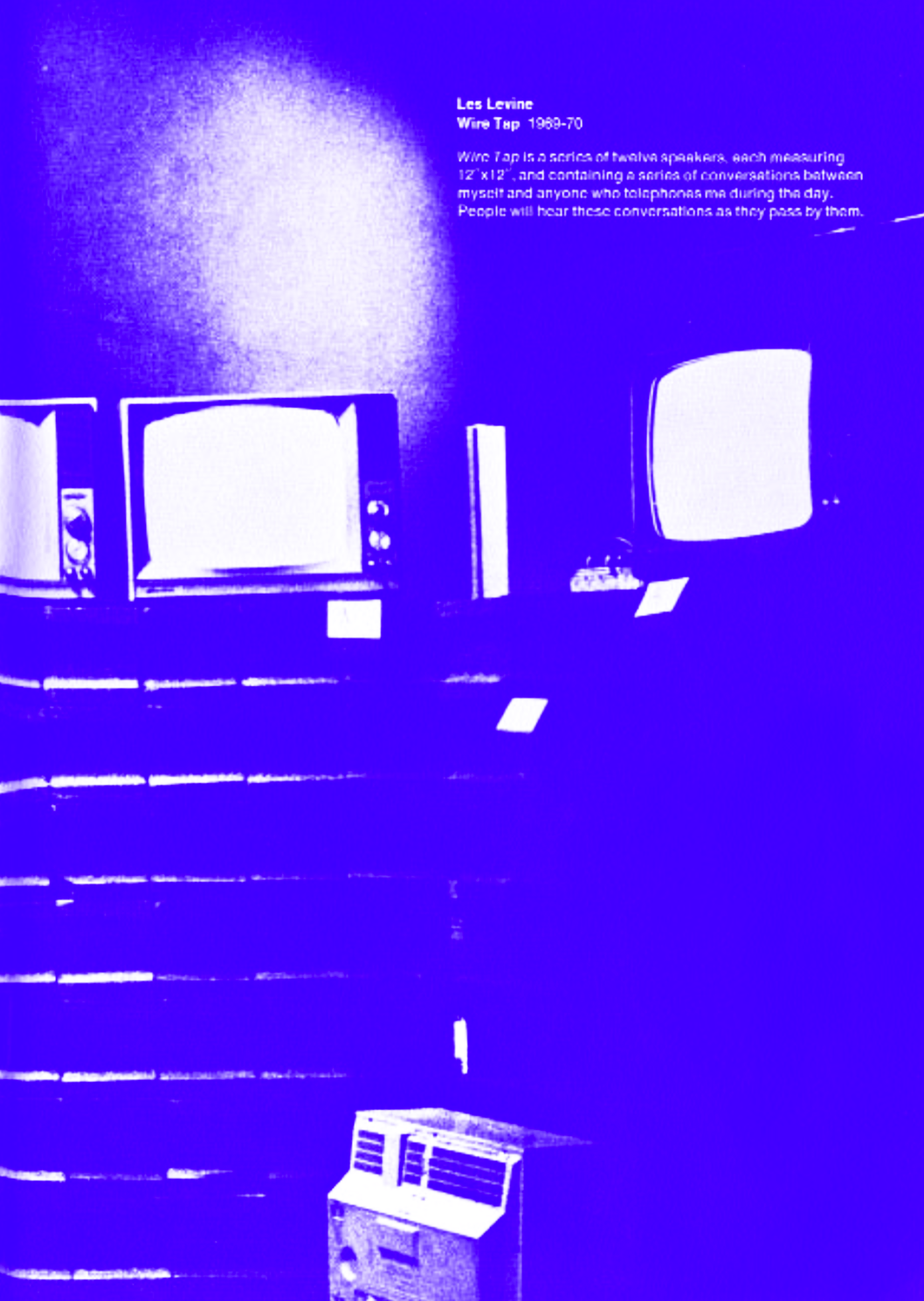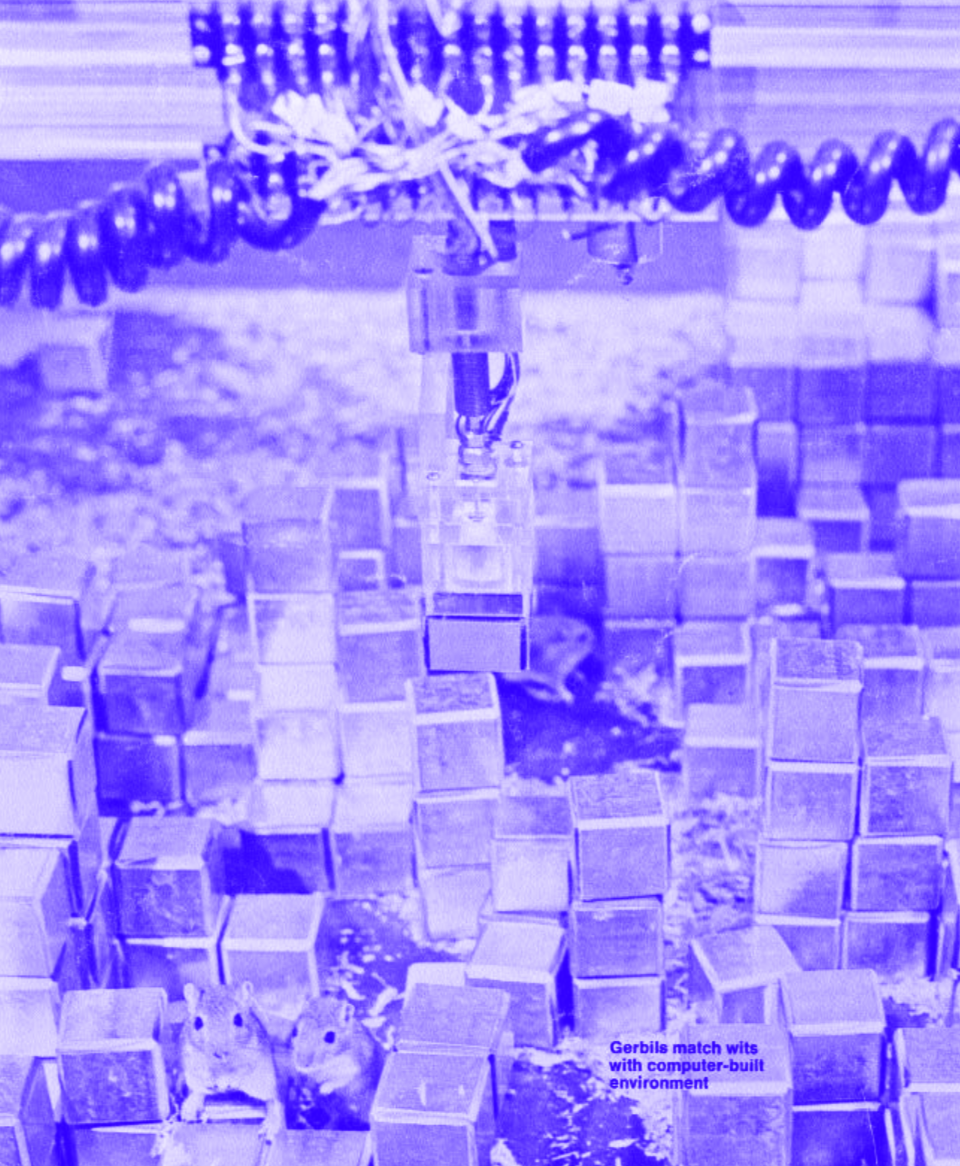/ the simplicity of complex
[1] William S. Borroughs / The Cut-Up Method of Bryon Gysin / 1963
[2] Ivan E. Sutherland / Sketchpad: A Man-Machine Graphical Communication System / 1963 [3] Daniel Shiffman / The Nature of Code / explaining John Neumann’s Cellular Automata / 2012
about
There is nothing new under the sun. It is a rather encouraging thought that as humans we already have everything we
need in order to create — what is required is just a bit of reusing / manipulating / constraining / instantiating /
copying / remixing of whatever exist on this world. But the interesting thing is, even though we use simple ingredients
and procedures, the products and the way we interpretate them are always a reflection of our complex human nature, the extensions of our consciousness. Nothing is new, anything could be simple, everything is complex.
0/1
EITHER YOU DO IT OR YOU DON'T /
EITHER IT IS OR IT ISN'T [3]
summarized after Daniel Shiffman /
The Nature of Code /
explaining John Neumann’s Cellular Automata /
2012
uniformity
EVERYTHING TENDS TO THE SAME STATE /
SIMPLICITY TENDS TO COMPLEXITY THE MOMENT IT IS DEFINED [3]
Daniel Shiffman / The Nature of Code / explaining John Neumann’s Cellular Automata / 2012
repetition
THERE IS NOTHING NEW UNDER THE SUN [1]
William S. Borroughs / The Cut-Up Method of Bryon Gysin / 1963
randomness
YOU MAKE THE RULES [2]
summarized after Ivan E. Sutherland / Sketchpad: A Man-Machine Graphical Communication System /1963
complexity
ORDERED PATTERN THAT IS UNPREDICTABLE [3]
Daniel Shiffman / The Nature of Code / explaining John Neumann’s Cellular Automata / 2012
learn more[1] From Software—Information Technology: Its New Meaning for Art / exhibition at the Jewish Museum / 1970 [2] Gilles Deleuze and Félix Guattari / From A Thausand Plateaus / 1980
introduced
This is an exploration of the idea of a human being as a biological entity that is placed into this social environment and thus cannot exist without it.
It is an idea of a human being that is a part of the whole on the outside, as a member of the community/society, but also on the inside, as a combination of happenings that helped defining and contextualising him. It is an idea of each
and every one of us.

Les Levine /
Systems Burn-Off
X Residual Software /
1969.
exposed
“A.I.R. basically consists of a group of television sets in a museum which displays ctivity taped in my studio, showing museum visitors the artist in his natural environment. The images change position from monitor to monitor on a random basis. I believe this brings the art process directly to the public environment and thereby makes a close connection between art and general culture.” [1]
informed
“Binary logic and biunivocal relationships still dominate psychoanalysis (the tree of delusion in the Freudian interpretation of Schreber’s case), linguistics, structuralism, and even information science.” [2]
“Whereas Levine stated that most art ‘ends
up as information about art’, Systems Burn-Off
was art as information about information about
art, adding a level of complexity and reflect-
ivity onto that cycle of transformations in
media culture.” [1]

Ned Woodman /
Theodor H. Nelson /
Labyrinth /
1970.

Les Levine /
Wire Trap /
1969-1970.
inspired
“We are no longer ourselves.
Each will know his own.
We have been aided, inspired,
multiplied.” [2]
“To answer, we must find a way to write, to act, to be engaged in life without believing in the self-similar self, without believing in easy dualisms – while knowing they will always crop up again.” [2]

The Architecture
Machine Group /
M. I. T. /
Seek /
1969-1970.
hybridized
“In a book, as in all things, there are lines of articulation or segmentarity, strata and territories; but also lines of flight, movements of deterritorialization and destratification. Comparative rates of flow on these lines produce phenomena of relative slowness and viscosity, or, on the contrary, of acceleration and rupture. All this, lines and measurable speeds, constitutes an assemblage.” [2]
“If computers are to be our friend they must understand our metaphore.
If they are to be responsive to changing, unpredictable, content-dependend human needs, they will need an artificial intelligence that can cope with complex contingencies in a sophisticated manner (drawing upon these methapors) much as Seek deals with elementary uncertanties in a simple-minded fashion.” [1]
multiplied
» /... the rhizome connects any point to any other point, and its traits are not necessarily linked to traits of the same nature; ... / ... It has neither be- ginning nor end, but always a middle (milieu) from which it grows and which it overspills. « [2]
“Nature doesn’t work that way: in nature, roots are taproots with a more multiple, lateral, and circular system of ramification, rather than a dichotomous one. Thought lags behind nature.” [2]
“Many of the exhibits in Software deal with conceptual and process relationships which on the surface seem to be totally devoid of the usual art trappings ...
Most importantly [Software] provides the means by which the public can personally respond to programmatic situations structured by artist.” [1]
transformation of knowledge
[1] Terry Winograd and Fernando Flores / Using Computer: A Direction for Design / 1986 [2] Michael Joyce / Siren Shapes: Exploratory and Constructive Hypertexts / 1988
Change is all around us. Technology is constantly evolving, there are new discoveries about human cognition, psychology, neurophysiology, medicine, artificial intelligence, every day we find new ways to express ourselves through art, music etc. We live in the evolution of our surroundings and yet one thing always remains the same: the way we learn about it. In the era of multiplicity our learning methods are still linear. Let’s break the pattern and realise that the learning process is multiple yet integrative, difficult yet universal, not easily schematized yet apparently systematic, inherently personal and yet socially manifested. It is everything but predictable. Everything but linear. It is our contribution to society and to ourselves.
tradition
"Ontologically oriented design is therefore necessarily both reflective and political, looking backwards to the tradition that has formed us but also forwards to as-yet-uncreated transformations of our lives together." [1]
cognition
"The human mind operates . . . by association,” claimed Vannevar Bush in describing his Memex in 1945; and from Bush onward through Douglas Engelbart’s Augment and even unto Ted Nelson’s Xanadu, the visionaries have insisted that the sometimes slippery and obscure trails of hypertext rest upon an underlying bedrock of natural cognition." [2]
criticism
"We are engaging in a philosophical discourse about the self – about what we can do and what we can be." [1]
interaction
"If machines could understand in the same way people do, interactions with computers would be equally transparent." [1]
future
"It is a fair bet to say that our age is at least as likely to be known in the future as the Age of Learning as it is as by the ordained cliche, the Information Age." [2]
learn more